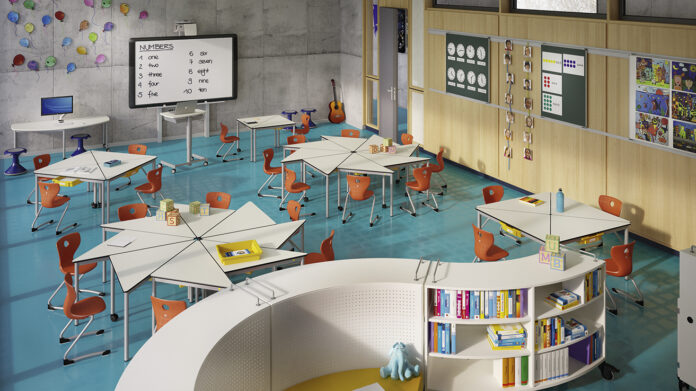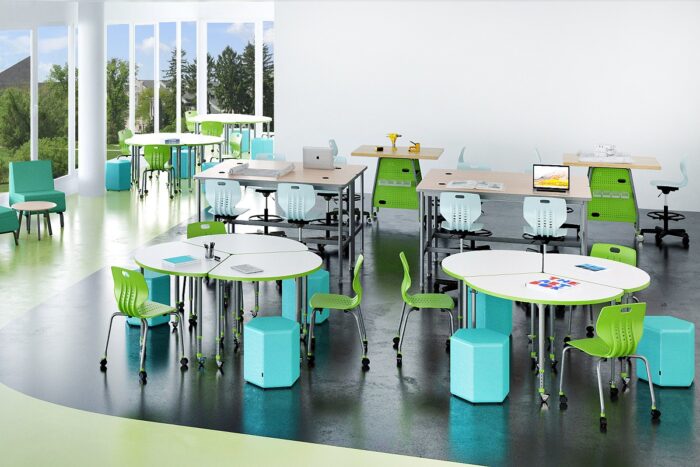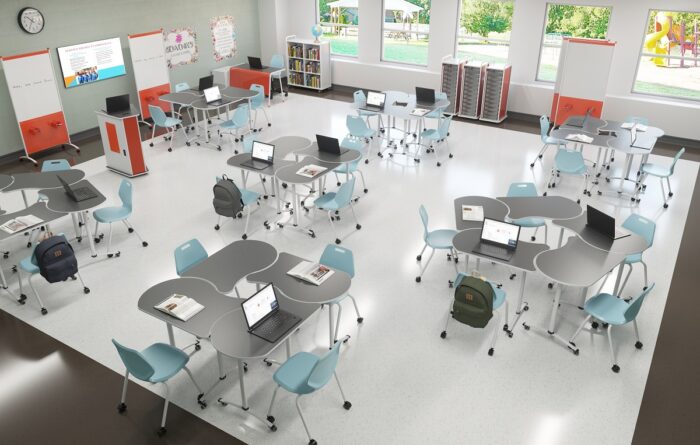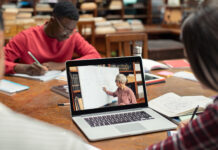
As education evolves in response to changing times and technology, so does the classroom of the future. One significant aspect of this evolution is the way we design and furnish these learning spaces.
Innovative school furnishing trends are not only about aesthetics but also about creating environments that promote collaboration, engagement, and active learning. In this article, we explore some of the most exciting trends in school furnishing that are shaping the classroom of the future.
Flexible Seating Arrangements
Gone are the days of rigid rows of desks and chairs. Today’s classrooms embrace flexible seating arrangements that cater to different learning styles and encourage collaboration. Students can choose from a variety of seating options, including standing desks, bean bags, and modular furniture that can be easily rearranged to suit different activities.
Ergonomics and Comfort
In the classroom of the future, comfort and ergonomics are paramount. Schools are investing in school furniture, including chairs and desks designed to support proper posture, reducing the risk of musculoskeletal problems. This ergonomic school furniture not only promotes physical well-being but also enhances concentration and focus, ultimately improving the learning experience.

Technology Integration
Technology is a fundamental part of modern education, and school furnishings are adapting accordingly. Desks now come equipped with charging ports and integrated technology, making it easier for students to connect and use their devices. Interactive whiteboards and digital displays are also becoming more common, replacing traditional chalkboards.
Sustainable Materials
The classroom of the future is environmentally conscious. Sustainable materials such as recycled plastics, reclaimed wood, and low-VOC finishes are being used to create furniture that is both eco-friendly and durable. Schools are also focusing on reducing waste by opting for furniture that can be easily repaired or recycled.
Personalized Learning Spaces
One size does not fit all in the classroom of the future. Schools are moving towards creating personalized learning spaces that cater to individual needs and preferences. This might include adjustable furniture, private study nooks, and sensory-friendly areas for students with special needs.
Biophilic Design
Biophilic design principles are making their way into classrooms, bringing the outdoors in. Natural lighting, indoor plants, and nature-inspired color palettes create a more calming and productive learning environment. Biophilic design has been shown to reduce stress, increase creativity, and enhance overall well-being.

Acoustic Considerations
Innovative school furnishing trends also address acoustic challenges. Open-plan classrooms and flexible seating arrangements can lead to increased noise levels. To combat this, schools are incorporating acoustic panels, sound-absorbing materials, and strategic furniture placement to create quieter, more focused learning environments.
Multi-Functional Spaces
The classroom of the future is designed to be multi-functional. Furniture is chosen not only for its primary use but also for its adaptability. Tables with built-in storage, mobile whiteboards, and foldable furniture enable educators to transform the space to suit various teaching methods and activities.
Conclusion
In conclusion, the classroom of the future is a dynamic and adaptable space that reflects the changing landscape of education. Innovative school furnishing trends prioritize flexibility, technology integration, sustainability, and the well-being of students. As we continue to embrace these trends, we can look forward to classrooms that inspire creativity, foster collaboration, and provide a comfortable and engaging environment for students of all ages.








